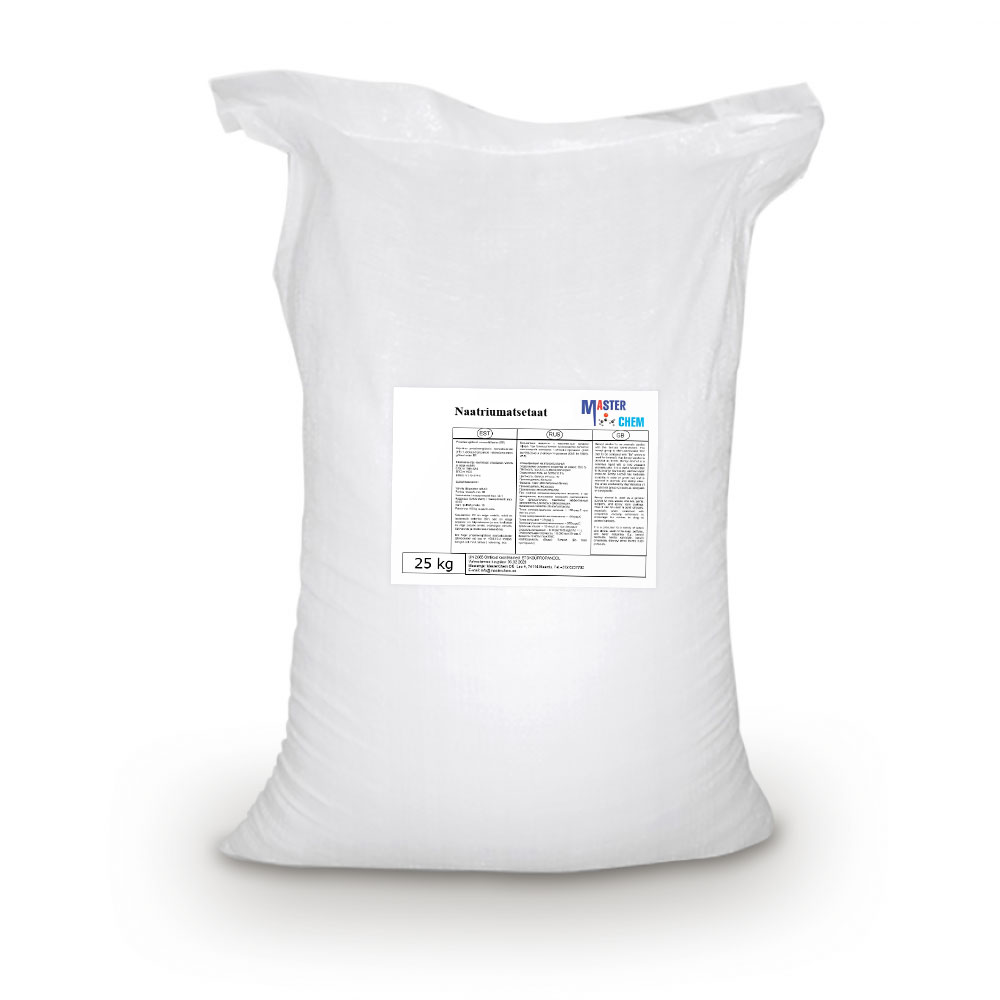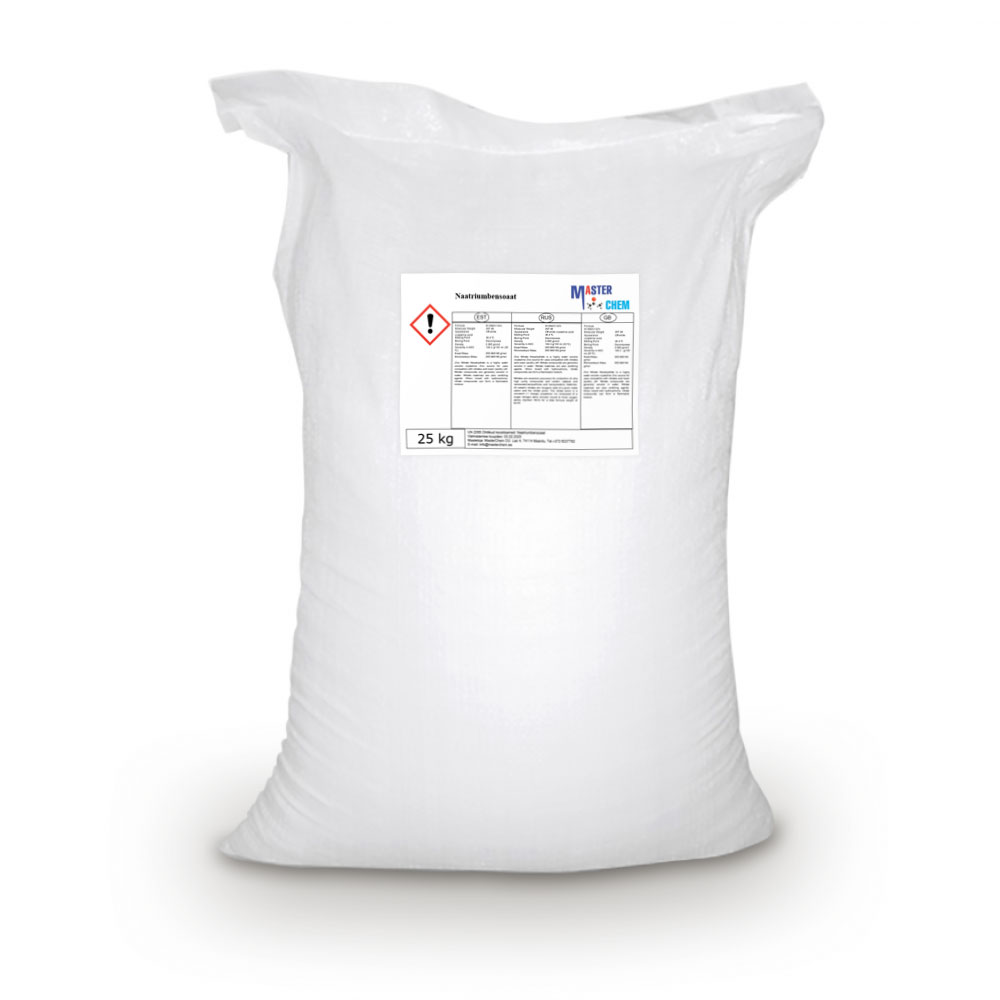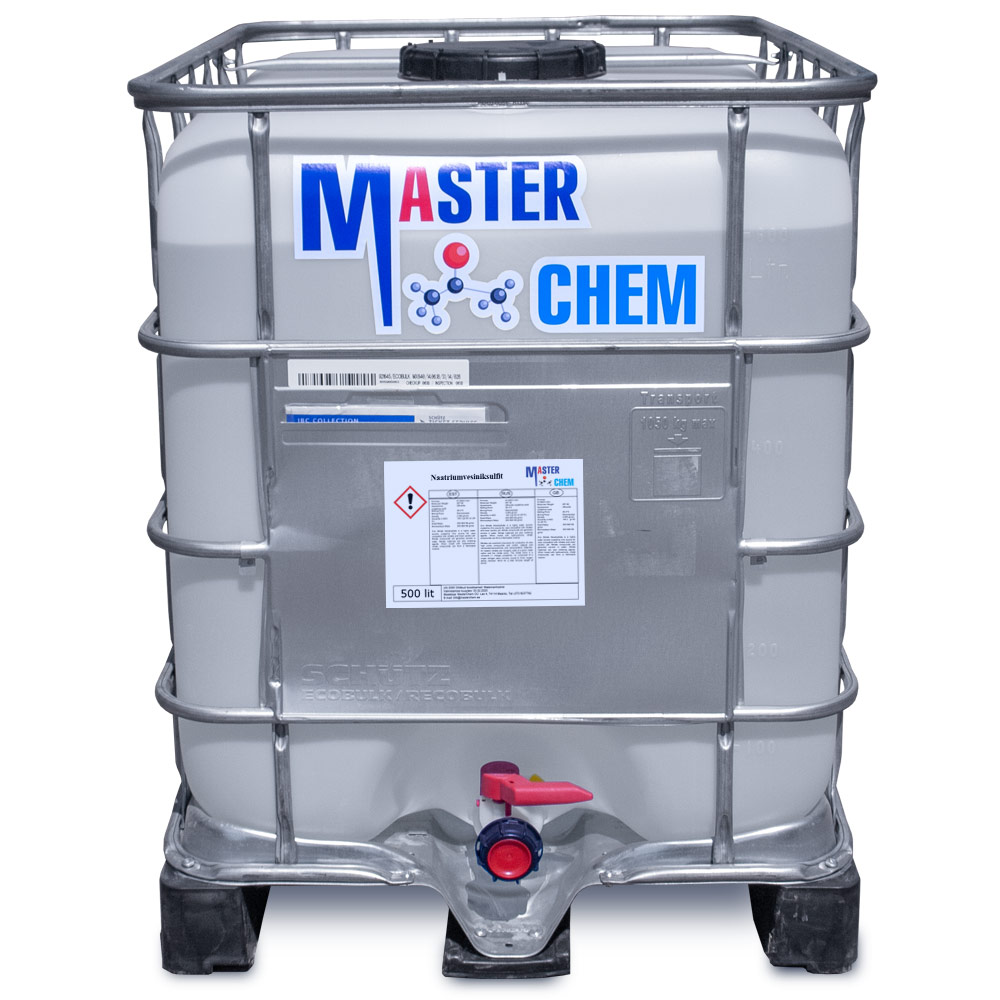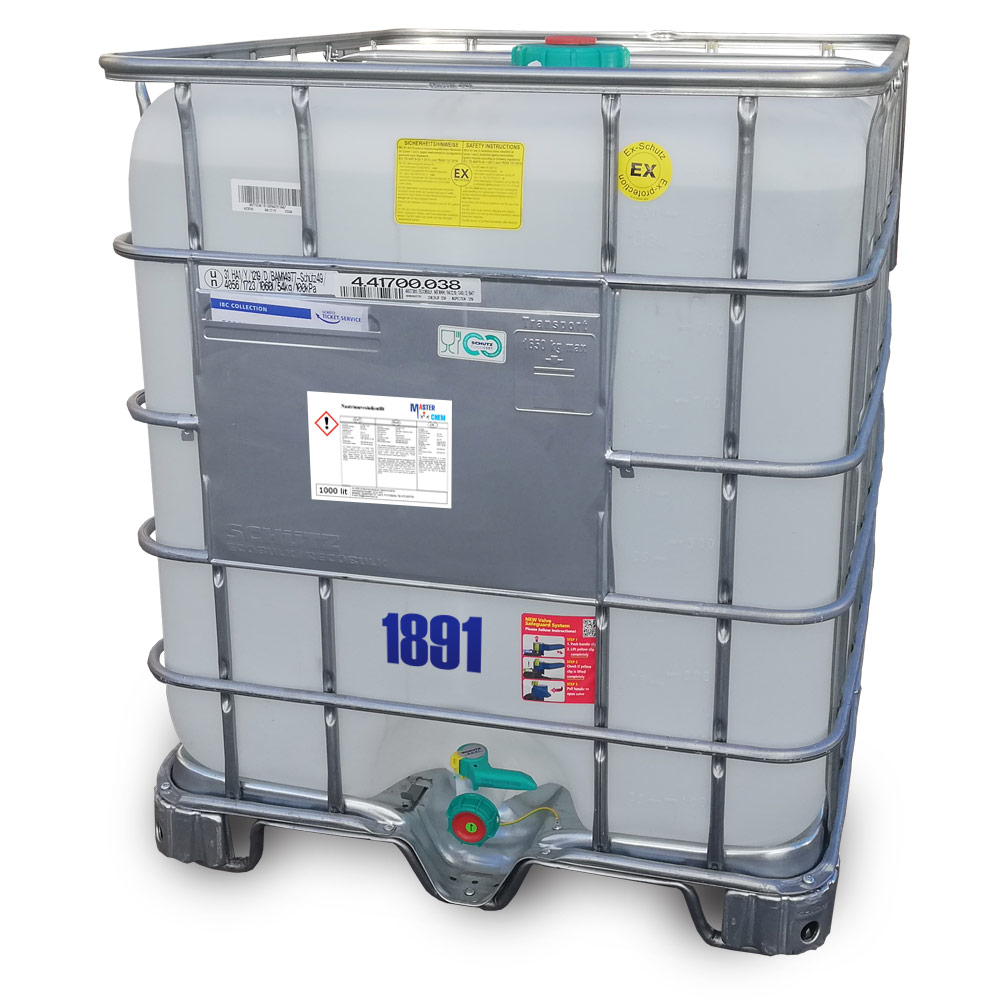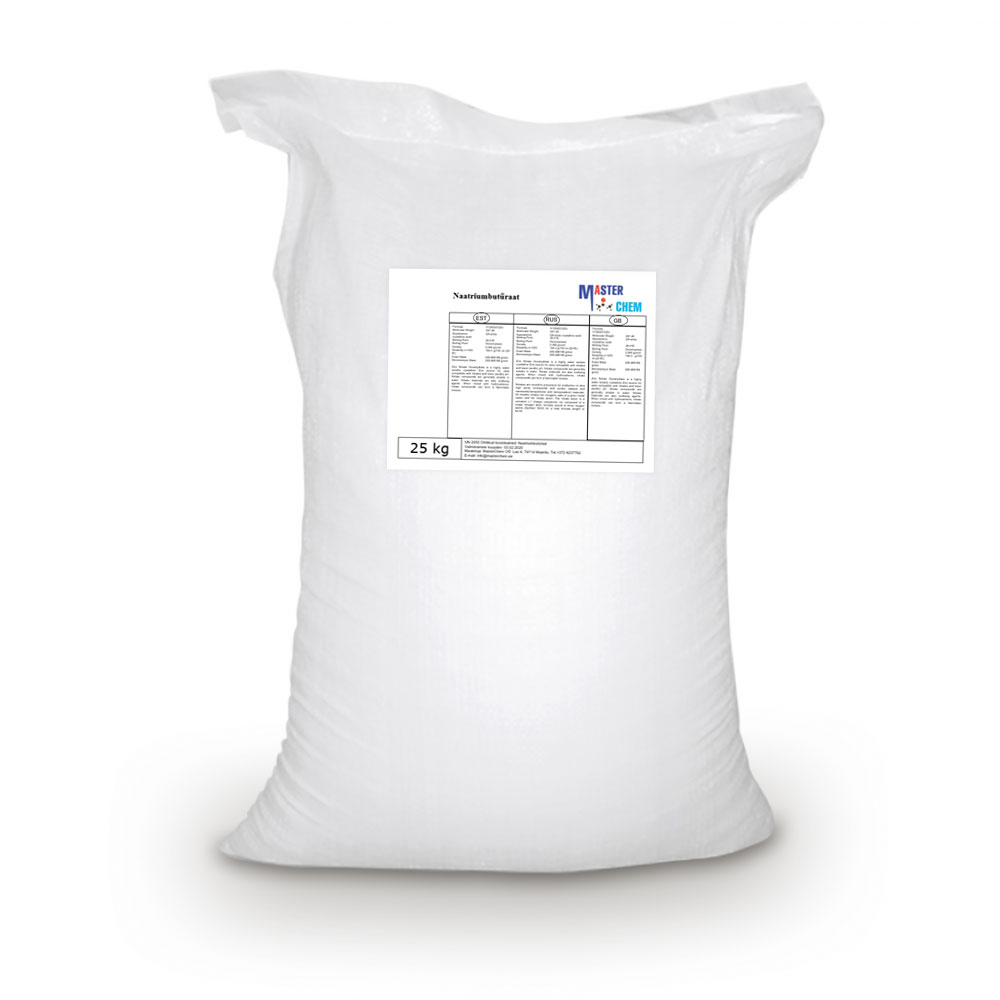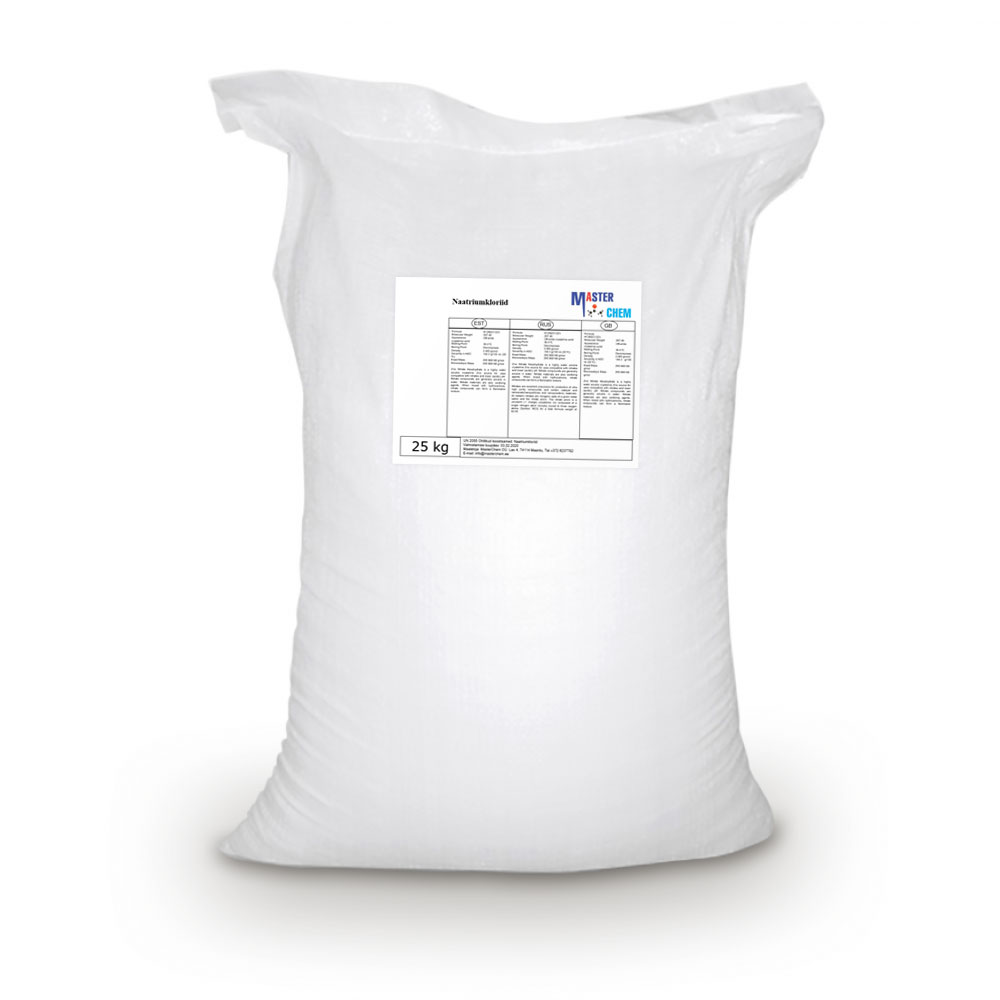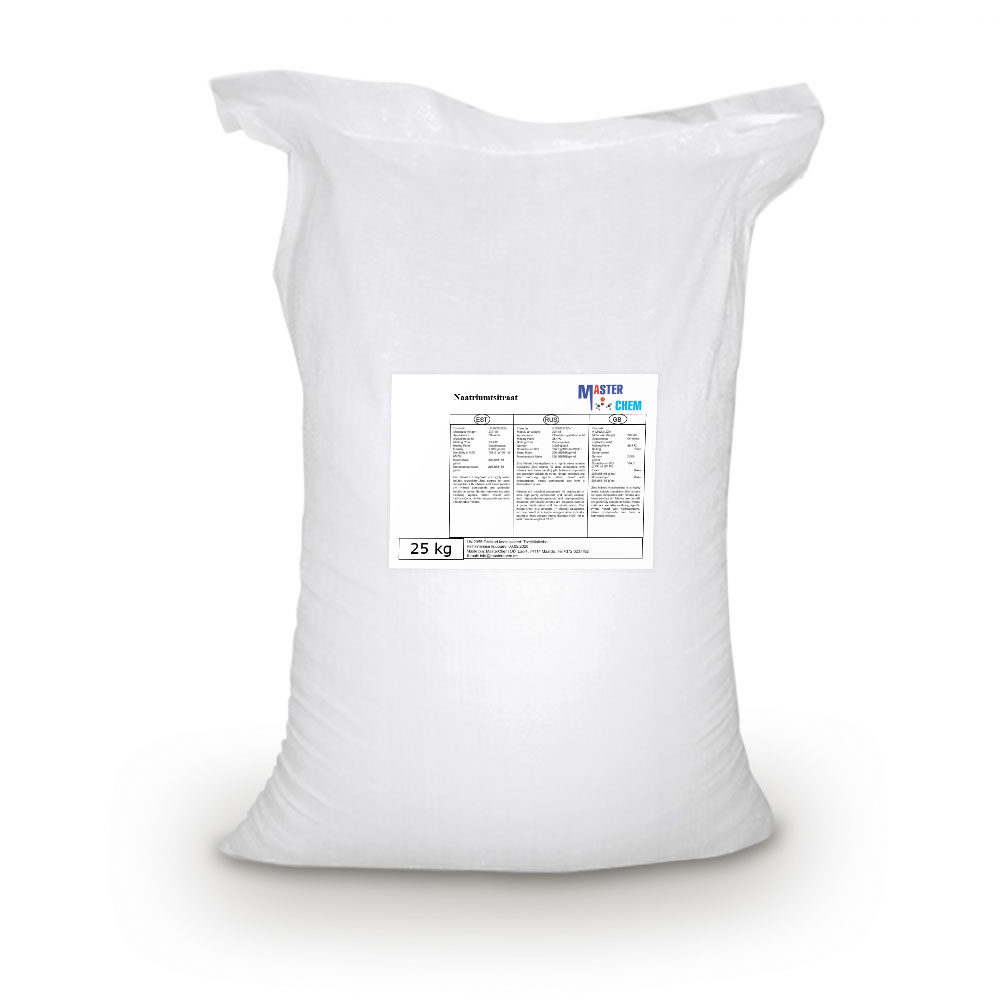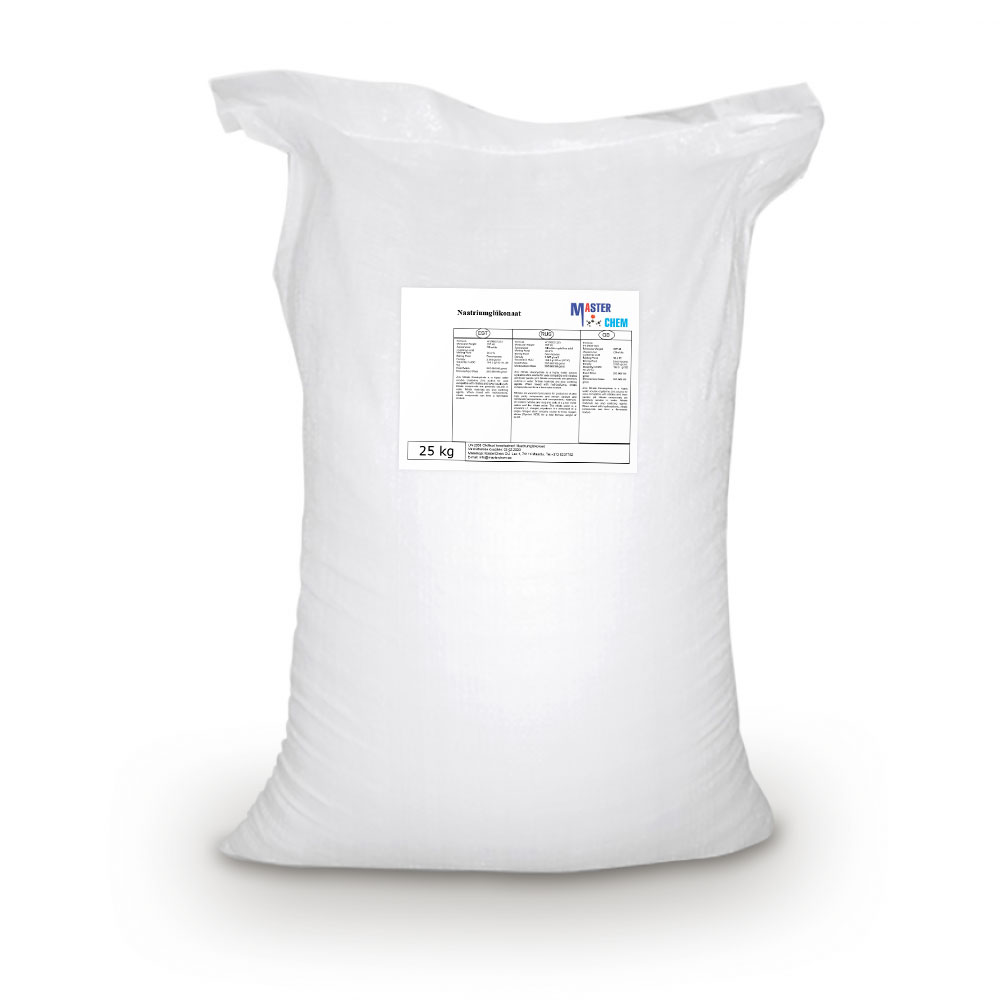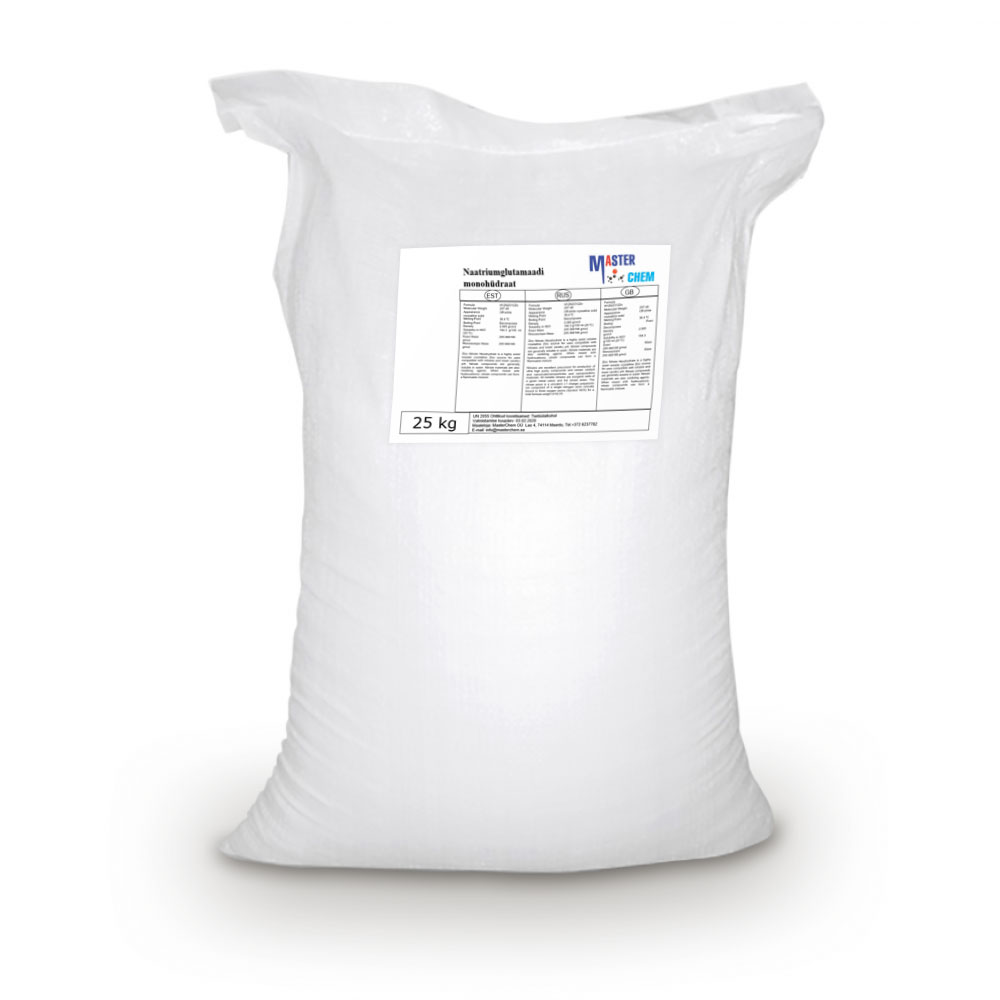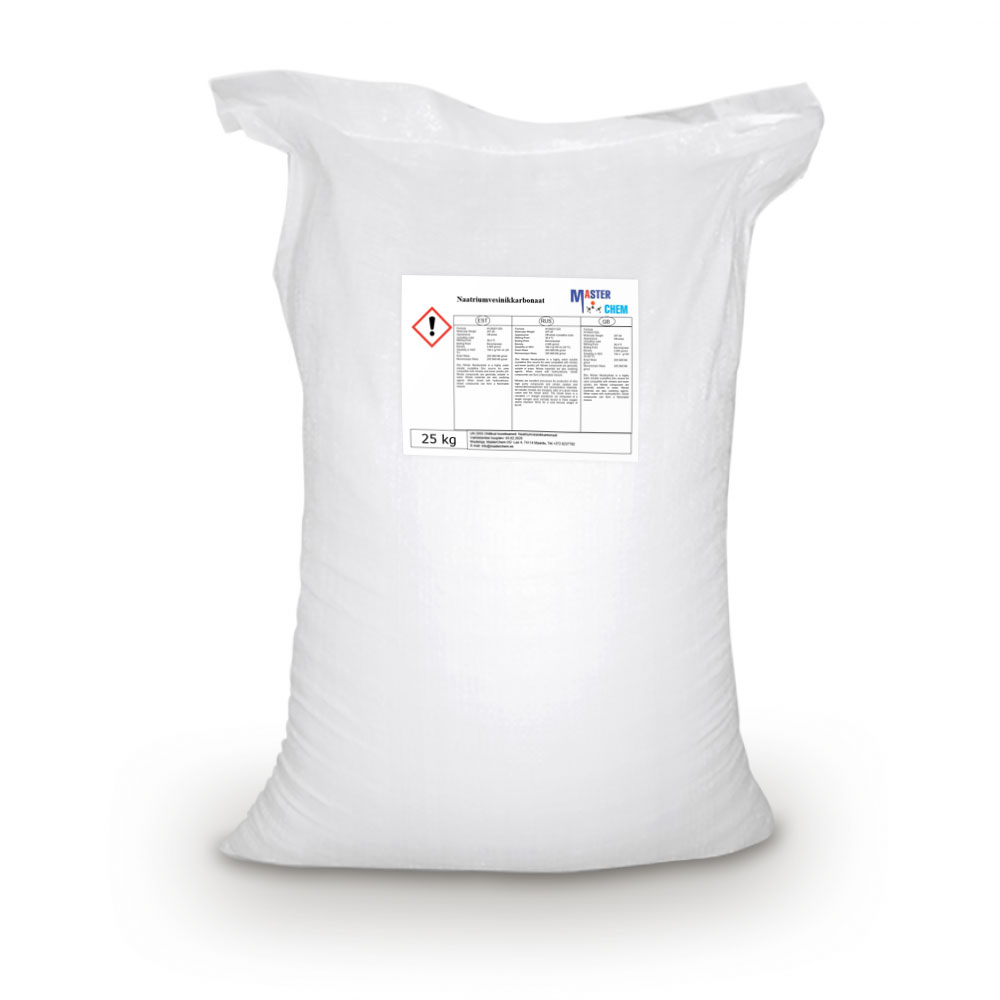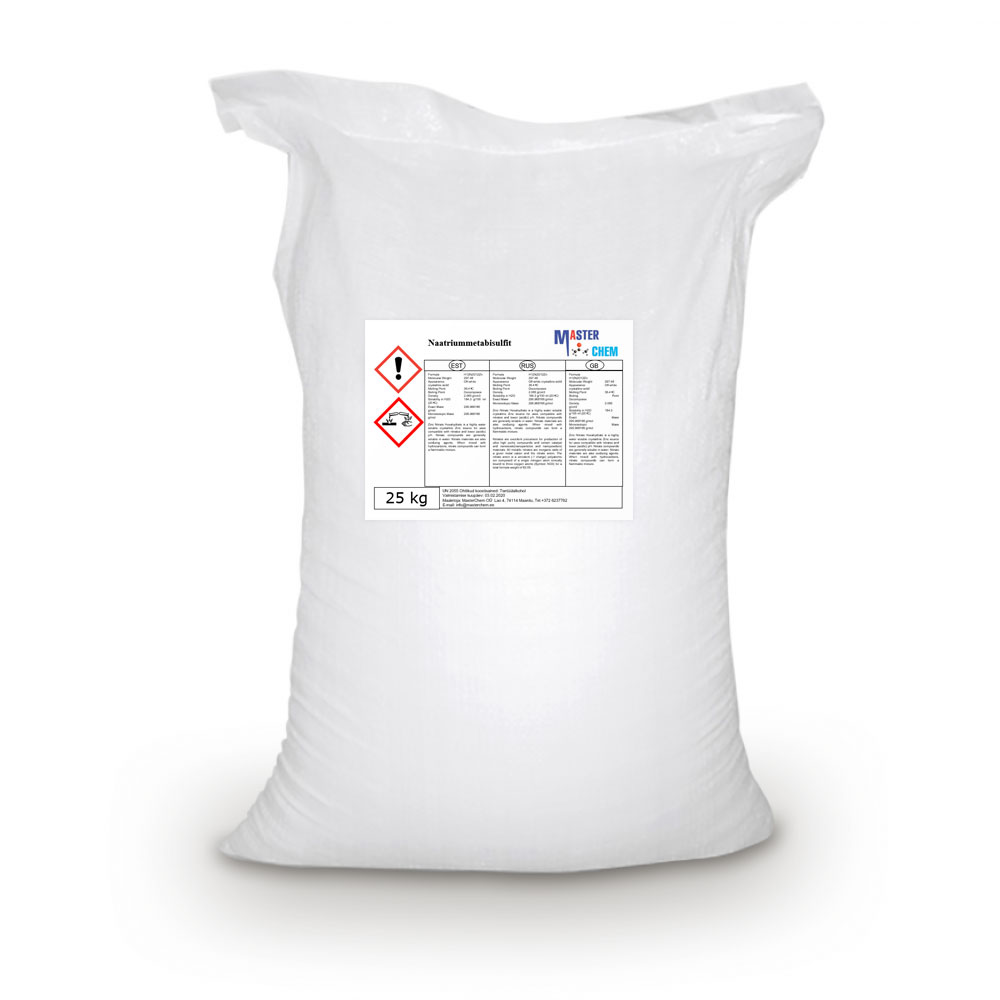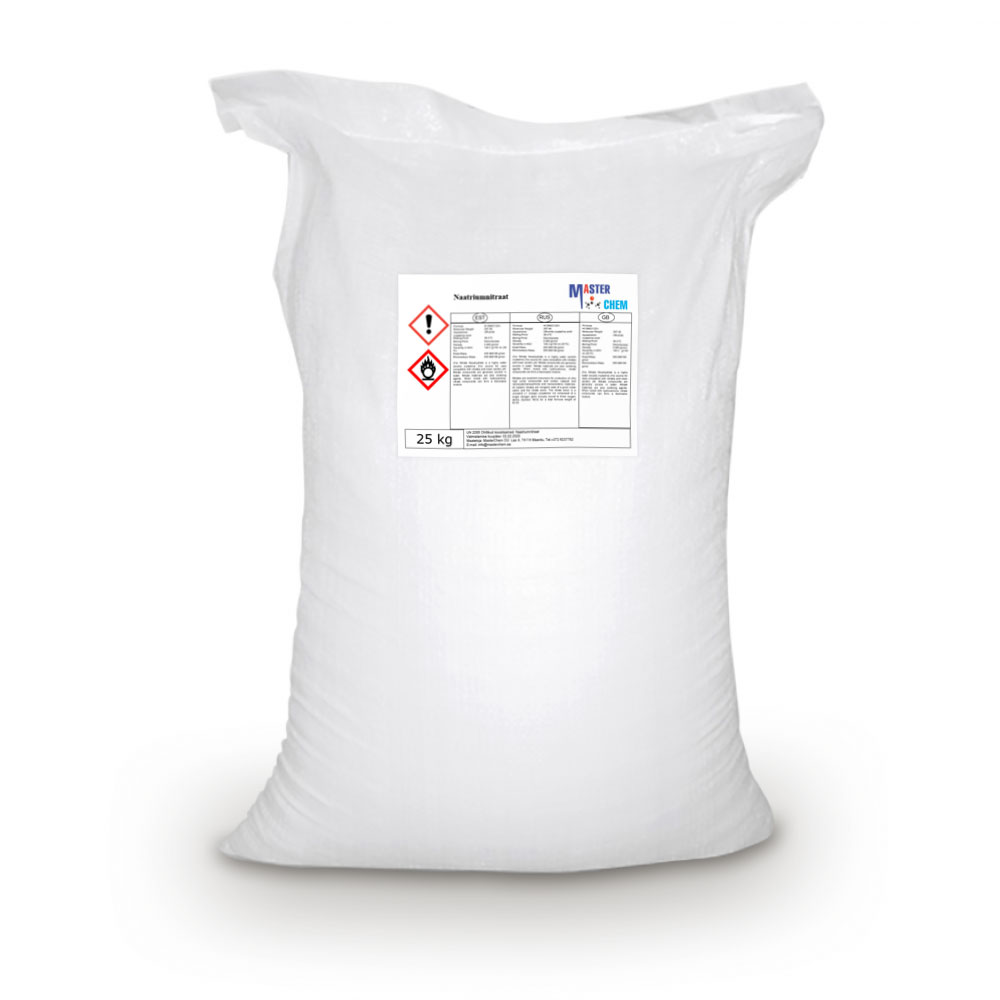Currently Empty: €0.00
Sodium acetate (CAS 127-09-3)
Sodium acetate (CAS 127-09-3)
Sodium acetate, NaCH3COO, also abbreviated NaOAc, is the sodium salt of acetic acid. This colorless deliquescent salt has a wide range of uses.
Applications
Biotechnological
Sodium acetate is used as the carbon source for culturing bacteria. Sodium acetate is also useful for increasing yields of DNA isolation by ethanol precipitation.
Industrial
Sodium acetate is used in the textile industry to neutralize sulfuric acid waste streams and also as a photoresist while using aniline dyes. It is also a pickling agent in chrome tanning and helps to impede vulcanization of chloroprene in synthetic rubber production. In processing cotton for disposable cotton pads, sodium acetate is used to eliminate the buildup of static electricity.
Concrete longevity
Sodium acetate is used to mitigate water damage to concrete by acting as a concrete sealant, while also being environmentally benign and cheaper than the commonly used epoxy alternative for sealing concrete against water permeation.
Food
Sodium acetate may be added to food as a seasoning, sometimes in the form of sodium diacetate, a one-to-one complex of sodium acetate and acetic acid, given the E-number E262. It is often used to give potato chips a salt and vinegar flavour, and may be used as a substitute for vinegar itself on potato chips as it doesn’t add moisture to the final product. Sodium acetate (anhydrous) is widely used as a shelf-life extending agent, pH control agent It is safe to eat at low concentration.
Sodium benzoate (CAS 532-32-1)
Sodium benzoate (CAS 532-32-1)
Sodium benzoate is the sodium salt of benzoic acid, widely used as a food preservative and pickling agent. A white crystaline chemical with the formula C6H5COONa, it has an E number of E211. It can be produced by reacting sodium hydroxide with benzoic acid.
Sodium benzoate is produced by the neutralization of benzoic acid, which is itself produced commercially by partial oxidation of toluene with oxygen.
Many foods are natural sources of benzoic acid, its salts (such as sodium benzoate), and its esters. Fruits and vegetables can be rich sources, particularly berries such as cranberry and bilberry. Other sources include seafood, such as prawns, and dairy products.
Sodium bisulhite (CAS 7631-90-5)
Sodium bisulhite (CAS 7631-90-5)
Sodium bisulfite solution is a variously colored liquid at room temperature. It is used in waste water treatment, in the pulp and paper industry, in the photographic industry and in various other industries as a bleach or dechlorinator. It can also be used to treat flue gases to remove sulfur trioxide (SO3).
Sodium butyrate (CAS 156-54-7)
Sodium butyrate (CAS 156-54-7)
Sodium butyrate is a compound with formula Na(C3H7COO). It is the sodium salt of butyric acid. It has various effects on cultured mammalian cells including inhibition of proliferation, induction of differentiation and induction or repression of gene expression. As such, it can be used in lab to bring about any of these effects. Specifically, butyrate treatment of cells results in histone hyperacetylation, and butyrate itself inhibits class I histone deacetylase (HDAC) activity, specifically HDAC1, HDAC2, HDAC3, and butyrate can be used in determining histone deacetylene in chromatin structure and function. Inhibition of HDAC activity is estimated to affect the expression of only 2% of mammalian genes.
In the lab, sodium butyrate is usually found as a white, water-soluble, crystalline solid. The chemical is notable for having a very strong, unpleasant smell that lingers. When working with sodium butyrate, gloves, eye protection and respiratory masks are advised for safety purposes.
Sodium chloride [rock salt] (CAS 7647-14-5)
Sodium chloride [rock salt] (CAS 7647-14-5)
Sodium chloride /ˌsoʊdiəm ˈklɔːraɪd/, commonly known as salt (although sea salt also contains other chemical salts), is an ionic compound with the chemical formula NaCl, representing a 1:1 ratio of sodium and chloride ions. With molar masses of 22.99 and 35.45 g/mol respectively, 100 g of NaCl contains 39.34 g Na and 60.66 g Cl. Sodium chloride is the salt most responsible for the salinity of seawater and of the extracellular fluid of many multicellular organisms. In its edible form of table salt, it is commonly used as a condiment and food preservative. Large quantities of sodium chloride are used in many industrial processes, and it is a major source of sodium and chlorine compounds used as feedstocks for further chemical syntheses. A second major application of sodium chloride is de-icing of roadways in sub-freezing weather.
Sodium chloride [salt tablets] (CAS 7647-14-5)
Sodium chloride [salt tablets] (CAS 7647-14-5)
Sodium chloride /ˌsoʊdiəm ˈklɔːraɪd/, commonly known as salt (although sea salt also contains other chemical salts), is an ionic compound with the chemical formula NaCl, representing a 1:1 ratio of sodium and chloride ions. With molar masses of 22.99 and 35.45 g/mol respectively, 100 g of NaCl contains 39.34 g Na and 60.66 g Cl. Sodium chloride is the salt most responsible for the salinity of seawater and of the extracellular fluid of many multicellular organisms. In its edible form of table salt, it is commonly used as a condiment and food preservative. Large quantities of sodium chloride are used in many industrial processes, and it is a major source of sodium and chlorine compounds used as feedstocks for further chemical syntheses. A second major application of sodium chloride is de-icing of roadways in sub-freezing weather.
Sodium Citrate (CAS 6132-04-3)
Sodium Citrate (CAS 6132-04-3)
Sodium citrates are used as acidity regulators in food and drinks, and also as emulsifiers for oils. They enable cheeses to melt without becoming greasy. It reduces the acidity of food as well.
Sodium citrate is used to prevent donated blood from clotting in storage. It is also used in a laboratory, before an operation, to determine whether a person’s blood is too thick and might cause a blood clot, or if the blood is too thin to safely operate. Sodium citrate is used in medical contexts as an alkalinizing agent in place of sodium bicarbonate, to neutralize excess acid in the blood and urine. It has applications for the treatment of metabolic acidosis and chronic kidney disease.
Sodium Gluconate (CAS 527-07-1)
Sodium Gluconate (CAS 527-07-1)
Sodium gluconate is a compound with formula NaC6H11O7. It is the sodium salt of gluconic acid. Its E number is E576. Sodium gluconate is widely used in textile dyeing, printing and metal surface water treatment. It is also used as a chelating agent, a steel surface cleaning agent, a cleaning agent for glass bottles, and as a chelating agent for cement, plating and alumina dyeing industries. It is a white powder that is very soluble in water.
Sodium Glutamate Monohydrate (CAS 142-47-2)
Sodium Glutamate Monohydrate (CAS 142-47-2)
L-(+)sodium glutamate (monosodium L-glutamate, MSG) has a unique taste, known as “umami”, which is different from the four basic tastes of sweet, salty, sour, and bitter.
MSG is used in large quantities as a flavor enhancer throughout the world. MSG is not a direct taste enhancer but a complex flavor enhancer for gravies, meats, poultry, sauces, and in other combinations. MSG is also used to enhance the taste of tobacco and to treat hepatic coma. As a salt of amino acid, MSG is also safe in practices of use and concentration in cosmetics, such as skin care products.
Sodium hydrocarbonate (Baking Soda) (CAS 144-55-8)
Sodium hydrocarbonate (Baking Soda) (CAS 144-55-8)
Sodium bicarbonate (IUPAC name: sodium hydrogen carbonate), commonly known as baking soda or bicarbonate of soda, is a chemical compound with the formula NaHCO3. It is a salt composed of a sodium cation (Na+) and a bicarbonate anion (HCO3−). Sodium bicarbonate is a white solid that is crystalline, but often appears as a fine powder. It has a slightly salty, alkaline taste resembling that of washing soda (sodium carbonate). The natural mineral form is nahcolite. It is a component of the mineral natron and is found dissolved in many mineral springs.
Sodium metabisulfite (CAS 7681-57-4)
Sodium metabisulfite (CAS 7681-57-4)
Sodium metabisulfite or sodium pyrosulfite (IUPAC spelling; Br. E. sodium metabisulphite or sodium pyrosulphite) is an inorganic compound of chemical formula Na2S2O5. The substance is sometimes referred to as disodium metabisulfite. It is used as a disinfectant, antioxidant, and preservative agent.
Sodium nitrate (CAS 7631-99-4)
Sodium nitrate (CAS 7631-99-4)
Sodium nitrate is the chemical compound with the formula NaNO3. This alkali metal nitrate salt is also known as Chile saltpeter (large deposits of which were historically mined in Chile) to distinguish it from ordinary saltpeter, potassium nitrate. The mineral form is also known as nitratine, nitratite or soda niter.
Sodium nitrate is a white deliquescent solid very soluble in water. It is a readily available source of the nitrate anion (NO3−), which is useful in several reactions carried out on industrial scales for the production of fertilizers, pyrotechnics and smoke bombs, glass and pottery enamels, food preservatives (esp. meats), and solid rocket propellant. It has been mined extensively for these purposes.

